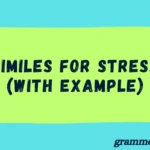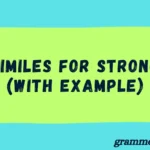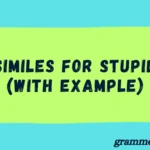When it comes to English spelling, even simple words can cause confusion—like writing vs writting. If you’ve ever second-guessed yourself while typing, you’re not alone. Many people wonder which is the correct form: is it writing with one “t” or writting with two? The truth is, “writing” is the only grammatically and spelling-correct version. The word refers to the act of putting words on paper, whether you’re writing a letter, crafting an essay, or composing a story.
Understanding common spelling mistakes like this one helps improve your grammar, boost your confidence, and avoid embarrassing typos. In this post, we’ll explain why “writing” is correct, why “writting” is wrong, and how to remember the difference with simple spelling rules, examples, and practical tips.
“Writing” vs. “Writting”: What’s Actually Correct?
Let’s get this out of the way early:
Correct spelling: writing
Incorrect spelling: writting
There is no scenario where “writting” is correct in standard English. The word doesn’t exist in any formal dictionary, and using it in writing — especially professional or academic contexts — will immediately flag a mistake.
Here’s a quick comparison:
| Spelling | Correct? | Reason |
| writing | Yes | Correct present participle of “write” |
| writting | No | Misspelling; breaks basic spelling rule |
Why Do People Get Confused Between “Writing” and “Writting”?
The confusion stems from a misunderstanding of consonant doubling rules in English. Some verbs double the final consonant before adding -ing (like “hitting” or “sitting”), and people assume “write” follows the same rule.
But it doesn’t. Here’s why:
- In words like hit → hitting, the final consonant is doubled because:
- It ends in a consonant-vowel-consonant pattern
- The last syllable is stressed
- The base word is one syllable
- It ends in a consonant-vowel-consonant pattern
But “write”:
- Ends in a silent ‘e’
- Has only one syllable, but the “e” changes the rule
- Does not fit the criteria for consonant doubling
So, no extra ‘t’.
The Grammar Rule: When to Double the Consonant Before -ing
Here’s the real trick: doubling a consonant follows a specific rule in English. If you understand this, you’ll never misspell “writing” again.
Consonant Doubling Rule:
If a one-syllable verb ends in a consonant-vowel-consonant (CVC) pattern, and the final syllable is stressed, double the final consonant before adding -ing.
Examples Where the Consonant IS Doubled:
| Base Verb | -ing Form | Why? |
| run | running | CVC pattern, one syllable, stressed |
| sit | sitting | CVC pattern, one syllable, stressed |
| hop | hopping | CVC pattern, one syllable, stressed |
Examples Where the Consonant Is NOT Doubled:
| Base Verb | -ing Form | Why Not? |
| write | writing | Ends in silent ‘e’; not CVC |
| bake | baking | Silent ‘e’ drops; no double consonant |
| hope | hoping | Same as above |
What Does “Writing” Actually Mean?
“Writing” is the present participle or gerund of the verb “write.” It can act as:
- A verb: She is writing a book.
- A noun: Good writing changes minds.
Definition of “Writing”
Writing (n.): The activity or skill of marking coherent words on paper or screen, or the written product of that activity.
Writing can include:
- Handwriting
- Typing
- Composing ideas
- Creating articles, stories, or reports
It’s used across nearly every profession — from teachers and authors to marketers, developers, and business executives.
Examples of “Writing” in Sentences
Let’s put the word to work. Here are common uses of “writing” in a variety of contexts:
| Tense/Type | Example Sentence |
| Present Continuous | I am writing an email to my manager. |
| Past Perfect Continuous | She had been writing for three hours straight. |
| As a Noun | His writing is clear, direct, and professional. |
| Idiomatic Expression | The writing is on the wall — change is coming. |
| Academic | Effective writing involves structure and clarity. |
Synonyms of “Writing” (And When to Use Them)
Sometimes, you might want to use a synonym of “writing” to keep your sentences varied or to sound more precise. Here’s a list of useful alternatives and when they’re appropriate:
| Synonym | Use When You Mean… | Example |
| Composing | Creating something original | She’s composing a new blog post. |
| Drafting | Making a rough or early version | He’s drafting a contract. |
| Penning | Writing in a formal or poetic tone | She penned a heartfelt letter. |
| Scripting | Writing dialogue or scenes for media | They’re scripting a short film. |
| Typing | Writing via a keyboard | I’m typing the meeting notes. |
Etymology of “Writing”
Understanding where a word comes from can deepen your understanding and memory of how to spell it correctly.
- Origin: Old English writan, meaning to score, draw, or inscribe letters
- Evolution:
- Old English: writan (to scratch, draw, write)
- Middle English: writen
- Modern English: write, writing
- Old English: writan (to scratch, draw, write)
Memory Tricks to Never Misspell “Writing” Again
If you’re still unsure, try these simple memory aids:
- “Write” has one ‘t’, so “writing” keeps it that way.
- Picture the word write and just add “-ing.” No need to touch the ‘t’.
- Say it aloud: WRY-ting — hear that one crisp “t”? Trust your ears.
- Think of a phrase: “Write right, no extra ‘t’ in sight.”
Words That Follow the Same Pattern as “Writing”
To make spelling easier, look at other verbs that also drop the silent ‘e’ and do not double the consonant when adding -ing:
| Verb | Correct -ing Form |
| make | making |
| bake | baking |
| create | creating |
| hope | hoping |
| type | typing |
These follow the same rule: Drop the ‘e’, add -ing, no doubling.
Quick Spelling Cheat Sheet
Here’s a one-glance guide you can use anytime:
| If Verb Ends In… | Rule | Example |
| CVC Pattern (1 syllable, stressed) | Double final consonant | run → running |
| Ends in silent ‘e’ | Drop ‘e’, do not double consonant | write → writing |
| Ends in two vowels + consonant | No doubling | sail → sailing |
| Multisyllabic, stress not on last | No doubling | enter → entering |
Case Study: Misspelling in Professional Writing
Case: A digital marketing intern submitted a campaign plan with the word “writting” used three times. The client spotted it immediately and questioned the quality of work.
Result:
- The company had to revise and resend the document.
- The intern had to complete remedial spelling training.
- It slowed down project approval by 2 days.
Lesson: Even one small spelling mistake like “writting” can hurt credibility — especially in professional communication.
The Bottom Line: Always Use “Writing” — Here’s Why
To recap:
- “Writing” is always the correct spelling
- “Writting” is a common but incorrect misspelling
- The rule is simple: Drop the silent ‘e’ and add -ing. Don’t double the ‘t’
- Learning this once can improve your spelling across dozens of other words
FAQs:
1. Is it written or writen?
The correct spelling is “written.”
“Writen” is a misspelling and not a valid English word.
2. What is grammatically correct writing?
Grammatically correct writing follows proper spelling, punctuation, and sentence structure.
It ensures clarity, coherence, and correct use of grammar rules.
3. Which is correct, I am writing or I write?
Both are correct, but used in different tenses.
“I am writing” is present continuous, while “I write” is simple present.
4. Is it written or writing?
“Written” is the past participle, while “writing” is the present participle.
Use depends on tense and sentence structure—for example, “I have written” vs “I am writing.”
5. Do we say writing or writting?
The correct spelling is “writing.”
“Writting” with two t’s is incorrect and not used in English.
Final Thoughts + Challenge for You
In conclusion, the correct spelling is always “writing,” not “writting.” The confusion often comes from English spelling rules, but it’s important to remember that the verb “write” drops the “e” before adding “-ing.” There is no need for a double “t.” Mastering small details like this can greatly improve your grammar and spelling skills.
Whether you’re preparing for an exam, writing a blog, or simply communicating clearly, using the right form matters. So, next time you’re unsure, stick with “writing”—the one “t” version is always the correct and professional choice.

Mariah Cannon is the dedicated educator behind GrammerHome.com, committed to making English grammar clear, engaging, and confidence-boosting. With years of teaching experience and a passion for effective communication, Mariah specializes in breaking down complex grammar rules into bite-sized, easy-to-apply lessons.




